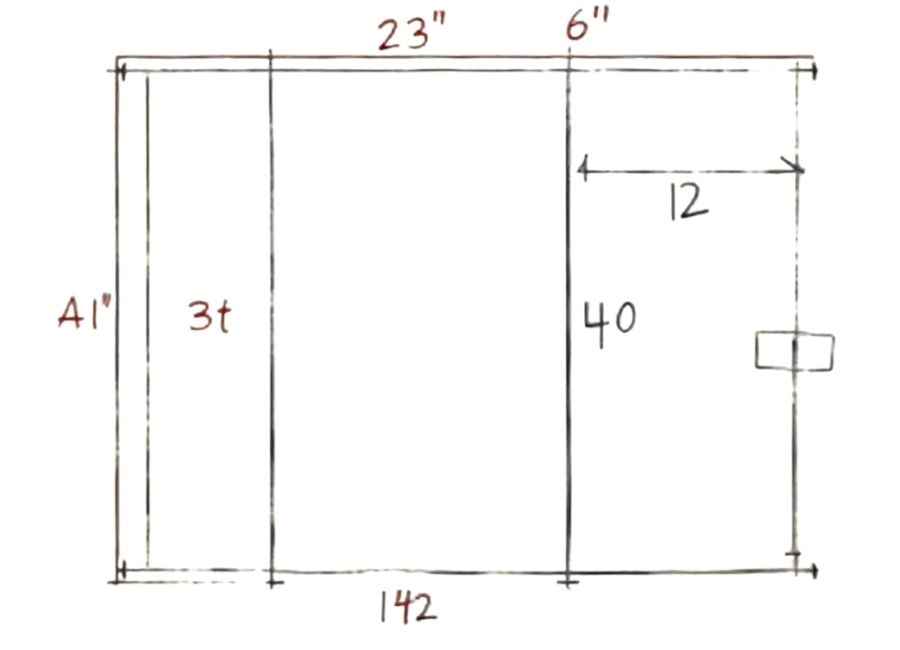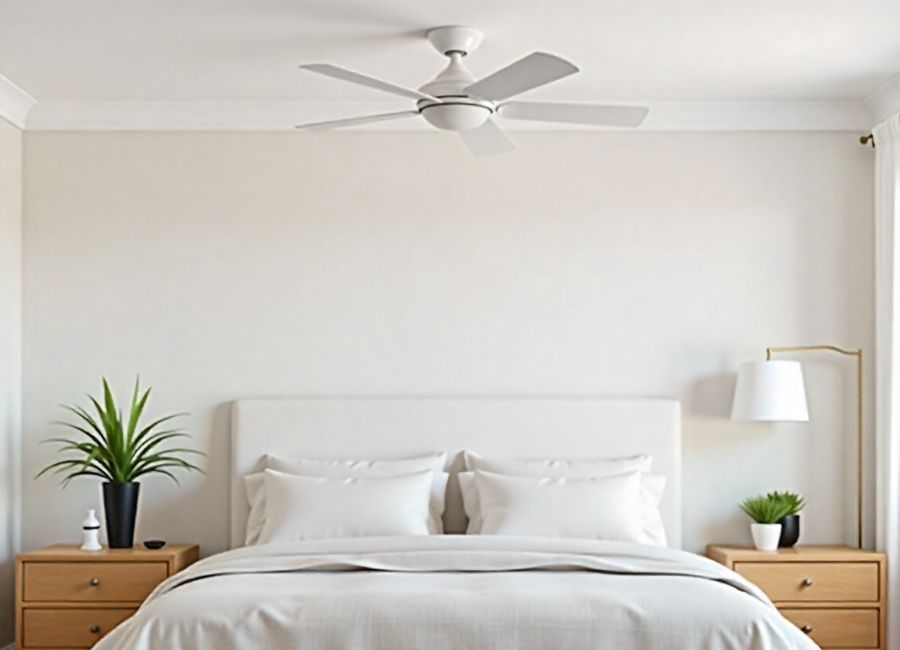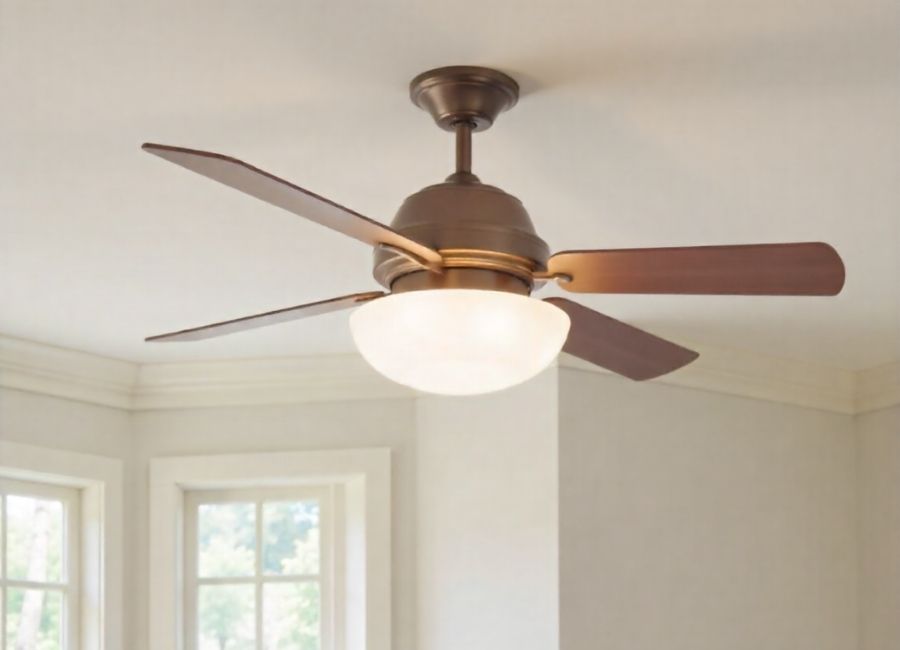A good night’s sleep is essential for our well-being, but it can be hard to achieve when your bedroom feels stuffy and warm. A ceiling fan is a fantastic solution, creating a gentle breeze that cools the room without the noise and expense of an air conditioner. However, choosing the right size fan is crucial for both performance and aesthetics. A fan that’s too small won’t move enough air, while one that’s too large can overwhelm the space.
This guide will walk you through everything you need to know about selecting the perfect fan size for your bedroom. We’ll cover how to measure your room, understand fan sizing, and consider other important factors like ceiling height and blade pitch. By the end, you’ll be able to confidently choose a fan that keeps you cool and comfortable all night long.
How to Determine the Right Fan Size
The most important factor in choosing a fan is the size of your room. A fan’s size is determined by its blade span or diameter—the distance from the tip of one blade to the tip of the opposite blade. A larger room requires a fan with a wider blade span to circulate air effectively.
Here’s a simple, two-step process to find the correct fan size for your bedroom.
Step 1: Measure Your Room’s Square Footage

First, you need to calculate the square footage of your bedroom. Grab a tape measure and find the length and width of the room in feet. Then, multiply these two numbers together.
Room Square Footage = Room Length (ft) x Room Width (ft)
For example, if your bedroom is 10 feet long and 12 feet wide, its square footage is 120 square feet (10 x 12 = 120).
Step 2: Match Square Footage to Fan Size
Once you have your room’s square footage, you can use industry-standard guidelines to find the appropriate fan diameter. The larger the room, the larger the fan you’ll need.
Here’s a quick reference chart:
| Room Size (Square Feet) | Recommended Fan Diameter (Inches) |
| Up to 75 sq. ft. | 29-36 inches |
| 76 to 144 sq. ft. | 36-42 inches |
| 145 to 225 sq. ft. | 44-50 inches |
| 226 to 400 sq. ft. | 50-54 inches |
| Over 400 sq. ft. | 54-62 inches or larger |
For most standard bedrooms, which typically range from 100 to 200 square feet, a fan with a blade span between 42 and 50 inches is usually the best fit. (Ceiling Fan Buying Guide | Sizes and Styles, n.d.)
Other Important Factors to Consider

While room size is the primary consideration, a few other factors can influence which fan will work best in your bedroom.
Ceiling Height
Your ceiling height affects how far the fan should hang from the ceiling. For optimal airflow, the fan blades should be between 8 and 9 feet from the floor. (Ceiling Fan Height Guide, n.d.)
- Standard Ceilings (8-9 feet): A standard mount, which comes with most fans, is usually sufficient. This typically includes a short downrod (3-5 inches).
- Low Ceilings (Under 8 feet): If your ceiling is lower than 8 feet, you’ll need a “hugger” or “flush-mount” fan. These fans install directly against the ceiling without a downrod, ensuring there’s enough clearance.
- High or Vaulted Ceilings (Over 9 feet): For taller ceilings, you’ll need an extended downrod to lower the fan to the ideal height. Downrods are available in various lengths, typically from 12 to 72 inches, to accommodate different ceiling heights. (12-inch Ceiling Fan Downrod – Matte White, n.d.)
Airflow and CFM Rating
A fan’s effectiveness is also measured by its airflow, indicated in cubic feet per minute (CFM). (How Many CFM Is a Ceiling Fan (With the Highest CFM Ceiling Fan), n.d.) This number tells you how much air the fan moves. A higher CFM means stronger airflow. For a bedroom, you’ll want a fan that provides a comfortable breeze without being overpowering. Look for a CFM rating of at least 3,000 for smaller bedrooms and 5,000 or more for larger master bedrooms. (Easy Ceiling Fan CFM Calculator | Find Your Ideal Airflow, n.d.)
The fan’s blade pitch—the angle of the blades—also contributes to airflow. A steeper pitch (ideally between 12 and 15 degrees) can move more air. (Ceiling Fan CFM Explained: Choosing the Right Airflow for Your Room, n.d.)

Lighting and Additional Features
Many bedroom ceiling fans come with built-in light kits, which can serve as the room’s primary light source. Consider whether you need a fan with integrated lighting or if you prefer a model without one. Modern fans often feature dimmable LED lights, allowing you to adjust the brightness to create the perfect ambiance.
Other features to look for include:
- Remote Control: A remote makes it easy to change fan speed and light settings from the comfort of your bed.
- Reversible Motor: A reversible motor allows you to change the direction of the blades. In the summer, the blades should rotate counterclockwise to create a cooling downdraft. In the winter, a clockwis (McGilvray & Jacquelyn, n.d.)e rotation pulls cool air up, circulating warm air trapped near the ceiling.
- Quiet Operation: Look for fans with a high-quality motor (DC motors are known for being exceptionally quiet and energy-efficient (The 8 Quietest Ceiling Fans of 2025: Whisper-Quiet Comfort, 2025)) to ensure it doesn’t disturb your sleep.
Your Next Steps to a Cooler Bedroom
Choosing the right size ceiling fan is a straightforward process when you know what to look for. By measuring your bedroom, matching the square footage to the recommended fan diameter, and considering factors like ceiling height and airflow, you can find a fan that provides optimal comfort and style. A well-chosen fan will not only help you sleep better on warm nights but also improve your room’s overall energy efficiency.
Now that you’re equipped with the right information, you’re ready to select a ceiling fan that will make your bedroom the perfect sanctuary for rest and relaxation.











